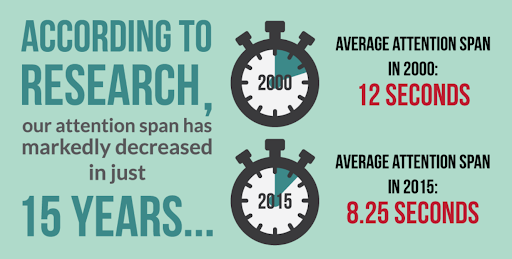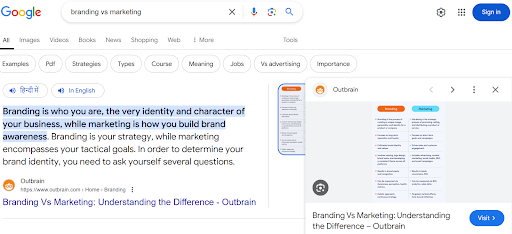SEO Content Writing Tips, And Dos & Don’ts for Top Rankings in 2025

SEO content, a work of art,
For websites to play their part.
In search engine results to shine,
Your content must be found by users online.
(Thanks, ChatGPT!)
SEO isn’t what it once was.
Try searching for something and see if you find what you were looking for in the top three organic results.
Years ago, you would search for black jeans, and most likely find the perfect item or store on the first SERP. There was an 80% chance you could see it in the top few results.
Today, with an explosion of content (set to expand tenfold with the use of AI for SEO content writing), it’s even more important to create high-quality, well-researched content that can provide instant value.
With an attention span of just 8.25 seconds, no one has time or headspace for bland content.

With so much competition to get those top rankings, your content simply has to be entertaining, educating, and/or inspiring. It has to give value, be engaging, and readable, and follow important SEO guidelines – all at the same time.
What Is SEO Writing and Why is it Important?
SEO writing is the process of creating content that is optimized for search engines, like Google. This involves using relevant keywords, crafting high-quality content, and following best practices to improve a website’s visibility in search results.
Why is SEO blog writing important?
More organic traffic
By optimizing your content for search engines, you can attract more organic traffic to your website.
Better brand visibility
Ranking higher in search results can increase your brand’s visibility and credibility.
Higher conversion rates
SEO-optimized content can attract qualified leads and drive conversions.
Cost-effective marketing
SEO is a long-term strategy that can yield significant results without a large budget.
Having said all that, good SEO is not an overnight fix. So we’re here to help with SEO content writing tips to make the SEO part a bit easier for you. And scroll down to the end to see our quick list of dos and don’ts!
Step-by-Step Guide for Successful SEO Content Writing in 2025
Step 1: Keyword research for SEO content writing
Always start with keyword research to identify the most relevant and popular keywords related to your topic. Think ‘outside-in’ – what your audience is interested in and searching for, rather than what seems interesting to you or your business.
Pick 3 to 5 primary keywords you want your article to rank for, and check that there is good search volume. More importantly, focus on long-tail keywords to target specific user intent and reduce competition. You can also incorporate semantic keywords and synonyms to improve your content’s relevance and search engine visibility.
Tip: “Good search volume” is a minimum of 100-1000 searches per month.
Use free tools like https://www.wordstream.com/keywords, https://questiondb.io/ or https://answerthepublic.com to help you.
Step 2: Write for your audience
Take a user-centric approach to write high-quality, informative, and engaging content that your audience will find valuable and shareable.
Google your chosen keywords and research the type of content already written on this subject matter; this is your competition, and your content needs to be better.
Tip: Choose five articles that are ranking well in the niche, and read them thoroughly. Go through the reader comments (if there are any), and see what the discussion is all about. Think about new or original topics that arise from the current conversations. Consider how you might bring something fresh, different, or unique to the topic. That’s what you should be writing about.
Try matching user search intent:
“Search intent” refers to the reason why a user is searching for a particular keyword or phrase. Are they looking for a specific product, researching for more information, or comparing different brands? Understanding search intent is crucial for creating content that ranks well in search engine results.
For example, if someone searches for “best mobile phone”, their intent is likely to find product recommendations and reviews. To match this intent, your content should provide detailed product comparisons, customer reviews, and buying guides.
Step 3: Optimize your content (On-page SEO)
Your blog post headline [H1] is one of the most important elements for SEO, so create compelling and keyword-rich title tags.
Additionally, write concise and informative meta-descriptions that entice users to click through your blog post. Use your main keyword in the headline and try to make it catchy and attention-grabbing. Tools like CoSchedule Headline Analyzer will help you check the headline’s readability and emotional impact.
Use H1, H2, and H3 tags for subheadings to structure your content and make it easier to read. Ensure the primary keywords are included in the subheadings.
Tip: You can use [H3] sub-subheadings for lists. For example, in the article you are reading now, each step (Step 1, Step 2, etc) is [H3].
Furthermore, you should optimize your images using descriptive file names and alt text to improve SEO and accessibility.
Step 4: Use internal and external links
Links – both internal on your own blog or website, or external to other blogs or sites – are really important for SEO. Internal links to other relevant pages on your website will help Google crawlers find your blog post. Linking to high-quality external sources adds credibility by association to your content, which is really important to improve your SEO.
Tip: Don’t link just for the sake of it. Make sure that the links are relevant and authoritative, and enrich the reading experience.
Step 5: Optimize your meta tags
The title tag and meta description of your content page are crucial elements for SEO.
- The title tag contains your main keyword and must be within the recommended character limit (60-70 characters).
- The meta description should include main and secondary keywords if possible, and also be informative and enticing (up to 160 characters).

Tip: Although meta tags are ‘technical’ elements of your content, don’t forget that people will be seeing them (not just crawlers). So they should describe the content in a way that is attractive to your readers and to Google!
Step 6: Use multimedia
Multimedia elements like images, infographics, and videos within the content can significantly enhance your SEO efforts. Visually appealing content not only captures user attention but also improves readability and comprehension. By incorporating multimedia, you can increase dwell time on your website, boost click-through rates in search engine results, and strengthen your brand identity.
Remember to optimize images with descriptive alt text and compress them for faster loading times. Additionally, using captions and subtitles for videos can improve accessibility and SEO.
For example, I was trying to rank for the keyword: “branding vs marketing”. So I searched Google and found that the top competing article featured an explanation in table format. So, I created an image that explored “branding vs marketing” visually and added it to my article. The SEO result? The blog climbed to the #1 position on SERP.

Step 7: Leverage AI, but responsibly
Use AI tools like Jasper.ai or Copy.ai as an assistant to generate ideas, write drafts, and optimize content. While AI enhances content writing capabilities and efficiency, it should complement human expertise. Always review and edit AI-generated content to ensure accuracy and originality.
Step 8: Promote your content on social media
Promoting your SEO content on social media can significantly boost your SEO efforts. When you share your content on platforms like Twitter, LinkedIn, and Facebook, you’re increasing its visibility and reach. More people are likely to discover and engage with your content, which can lead to more backlinks and social shares. These signals indicate to search engines that your content is valuable and relevant, which can improve your search engine rankings. Additionally, social media can drive direct traffic to your website, which can also positively impact your SEO.
(Bonus) Step 9: Analyze, learn, repeat.
Use Google Analytics to monitor your site or blog’s traffic, engagement rate, user behavior, and other key metrics. Use Google Search Console(GSC) to track your website’s search performance, and identify indexing issues. This will help you identify areas for improvement and make data-driven decisions.
Difference Between SEO Writing and Content Writing

SEO writing focuses on optimizing content for search engines like Google by using relevant keywords, improving website structure, and building backlinks to increase visibility in search results.
On the other hand, content writing focuses on creating engaging and informative content that resonates with the target audience, regardless of search engine rankings.
Quick Guide: Dos and Don’ts of SEO Content Writing
Originality
- Do NOT rely on ChatGPT. Sure, every content writer is exploring how to use AI, but the trick is using it wisely. ChatGPT is a great tool for research and brainstorming, but you need your own voice to shine. It won’t if you give the job to ChatGPT.
- Do NOT copy other websites’ content. So this is a pretty obvious one, and apart from the ethical issues, you simply won’t rank on SERPs if you use duplicate content. By the way, this applies to content from your own website too.
- Do check all content for plagiarism.
- Do use plagiarism checker tools like www.duplichecker.com and www.plagiarismdetector.net,
Creativity
- DO NOT write content that you find boring. If it’s boring to the writer, it will be boring to the reader.
- DO NOT write ‘thin’ content that provides little or no value to the user. Try to go deeper into the topic.
- DO write insightful content, backed up by authoritative resources and links.
- DO include your own opinion. This is what will make your content stand out from the crowd.
Images
- DO NOT use copyrighted images. Of course.
- DO include images when they support and enrich the reading experience, or support your claims.
- DO use screenshots, videos, tables, charts, graphs, and other visual elements where appropriate to make the content more engaging.
Keywords
- DO NOT stuff the article with keywords, or overuse keywords in an unnatural way. Make sure the keywords fit seamlessly into the content flow.
- DO use your primary keywords as much as possible.
Readability
- DO NOT write long paragraphs of text. Instead, break up the content into shorter bite-sized parts that won’t intimidate readers.
- DO use spacing and paragraph breaks liberally. This makes it easier to skim and consume the content.
- DO use bulleted lists, standout quotes, data, or tips, when they are relevant and appropriate. These make the page more eye-catching and readable, which search engines love.


